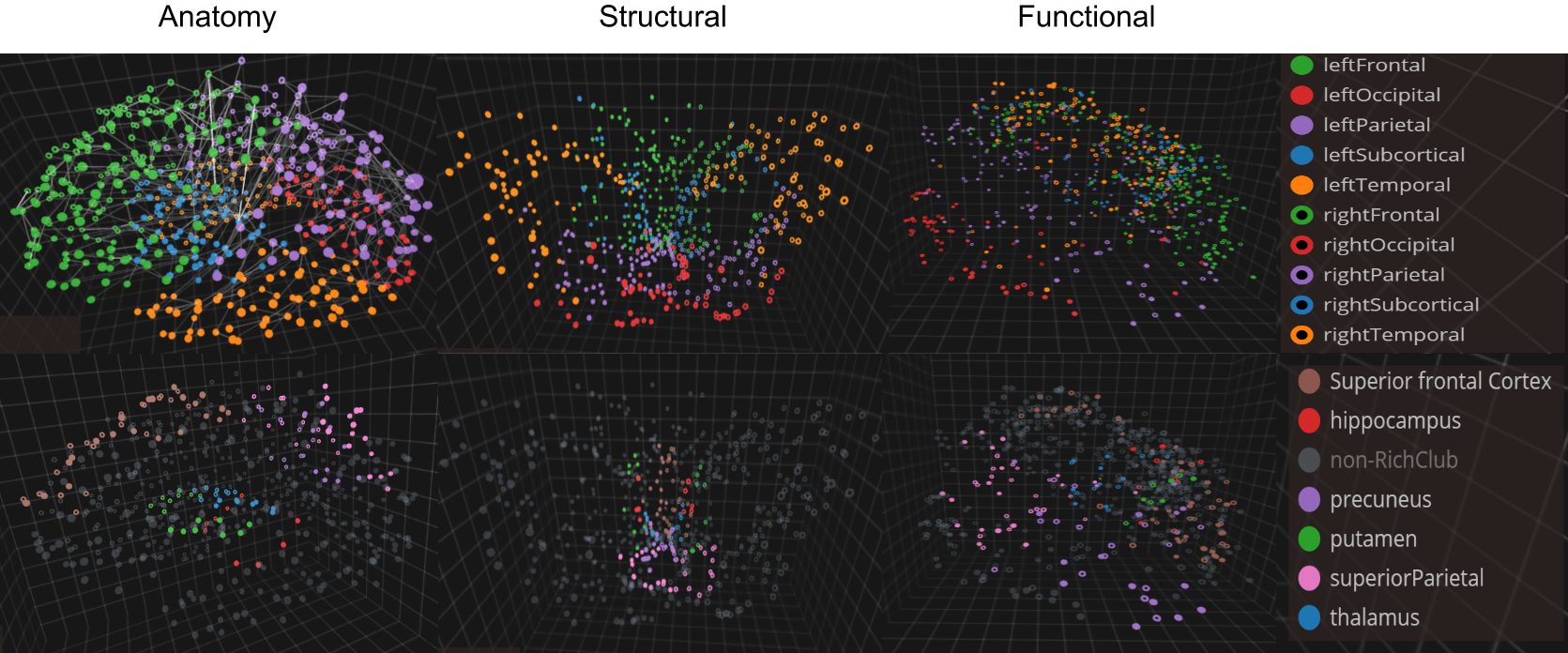BRAINtrinsic: A Virtual Reality-Compatible Tool for Exploring Intrinsic Topologies of the Human Brain Connectome
August 30th, 2015
Categories: Visual Analytics, Visual Informatics

Authors
Conte, G., Ye, A.Q., Forbes, A.G., Ajilorem O., Leow, A.About
Thanks to advances in non-invasive technologies such as functional Magnetic Resonance Imaging (fMRI) and Diffusion Tensor Imaging (DTI), highly-detailed maps of brain structure and function can now be collected. In this context, brain connectomics have emerged as a fast growing field that aims at understanding these comprehensive maps of brain connectivity using sophisticated computational models. In this paper we present BRAINtrinsic, an innovative web-based 3D visual analytics tool that allows users to intuitively and iteratively interact with connectome data. Moreover, BRAINtrinsic implements a novel visualization platform that reconstructs connectomes’ intrinsic geometry, i.e., the topological space as informed by brain connectivity, via dimensionality reduction. BRAINtrinsic is implemented with virtual reality in mind and is fully compatible with the Oculus Rift technology. Last, we demonstrate its effectiveness through a series of case studies involving both structural and resting-state MR imaging data.
Keywords: connectomics, connectome datasets, intrinsic geometry, neuroimaging
Resources
Citation
Conte, G., Ye, A.Q., Forbes, A.G., Ajilorem O., Leow, A., BRAINtrinsic: A Virtual Reality-Compatible Tool for Exploring Intrinsic Topologies of the Human Brain Connectome, In Proceedings of Brain Informatics and Health (BIH), London, UK, August 30th, 2015.